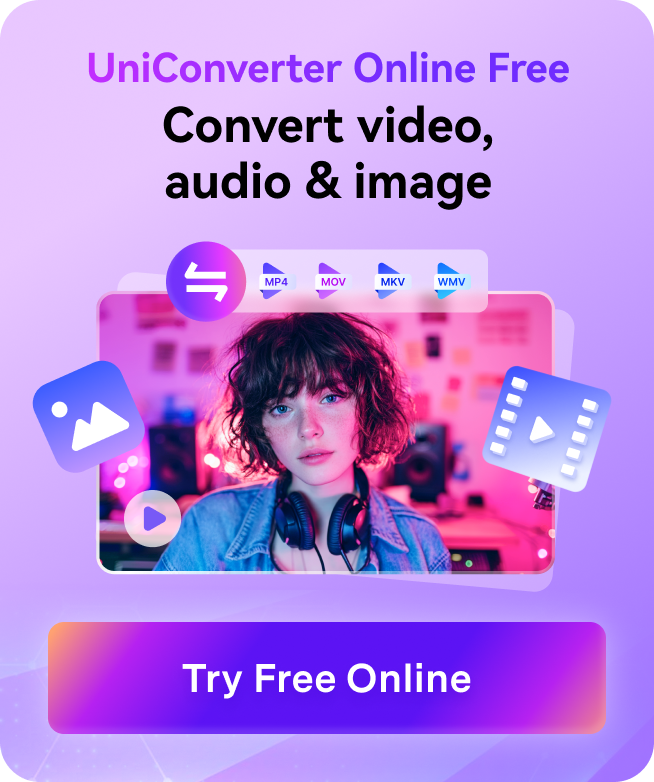Designers and professionals often face the challenge of converting raster images like JPGs and PNGs into editable vector formats. Thanks to advancements in artificial intelligence, the process has become incredibly simple. AI JPG to vector tools allow you to transform pixel-based images into scalable vector files in just a few clicks. This guide will take you through everything you need to know, including the differences between rasters and vectors, their benefits, and how to use AI-powered tools to achieve professional results.
In this article
Part 1: What is a JPG & Vector?
What is a JPG?
JPG, or JPEG, is a commonly used raster image format. It is popular for compressing digital photos while maintaining acceptable quality for web use. However, JPGs have limitations:
- Pixel-based structure: JPG images consist of tiny squares (pixels).
- Quality loss during scaling: Enlarging JPGs often results in pixelation.
- Compression artifacts: High compression levels may lead to visible distortions in the image.
What is a Vector?
A vector is a graphic made up of geometric shapes, such as lines, curves, and polygons. Unlike JPGs, vectors use mathematical equations to define shapes, enabling them to:
- Scale infinitely without losing quality: Ideal for logos, illustrations, and branding materials.
- Be saved in various formats: Common formats include AI, SVG, EPS, and PDF.
- Offer better precision: Ensuring sharp lines and clean details at any resolution.
Using AI JPG to vector tools, you can easily convert raster formats like JPG into scalable vector formats.

Part 2: What’s the Difference Between Rasters and Vectors?
When working with digital images, understanding the distinction between raster and vector graphics is crucial for selecting the right format for your project. Both formats have their unique characteristics, strengths, and limitations, making them suitable for different use cases.
Raster and vector graphics are two fundamental image types, each with unique characteristics that make them suitable for different purposes. Raster graphics, also known as bitmap images, are composed of a grid of tiny squares called pixels, where each pixel holds color information. Common formats like JPG, PNG, and TIFF are raster-based, making them ideal for photographs and images with intricate color details. However, raster images have a major drawback: they lose quality when scaled up, resulting in pixelation and blurry edges. High-resolution rasters also tend to have larger file sizes, making them less practical for projects requiring lightweight files.
In contrast, vector graphics are made of mathematical equations that define shapes, lines, curves, and polygons. Instead of relying on pixels, vectors use formulas, allowing them to scale infinitely without any loss in quality. File formats like AI, SVG, and EPS are popular for vector-based graphics, which are commonly used in logos, illustrations, and print designs. Vectors are lightweight, easy to edit, and maintain sharp edges even at large sizes. However, they are less suitable for detailed color work, like complex photographs, as they are optimized for simpler designs with solid colors or gradients.
Understanding the differences between raster and vector images is crucial for choosing the right format for your project. If scalability and precision are priorities, vectors are the preferred choice, especially for logos, icons, and banners. On the other hand, rasters are better suited for detailed images like photographs or digital artwork. By using AI JPG to vector or AI PNG to vector tools, designers can bridge the gap between the two formats, converting pixel-based images into scalable vector files to enjoy the best of both worlds.
Part 3: Why Designers Love Vector Images: Key Benefits Explained
Vector images have become a cornerstone of modern design, offering unparalleled advantages for professionals and creatives alike. Unlike raster graphics, vectors rely on mathematical equations, making them scalable, versatile, and ideal for various applications. Using AI JPG to vector or AI PNG to vector tools, designers can effortlessly convert raster images into high-quality, editable vector files. Here are the key benefits of vector images that make them a favorite among designers:

1. Infinite Scalability Without Quality Loss: One of the most significant advantages of vector images is their ability to scale infinitely without losing quality. Whether it's a tiny logo or a massive billboard, vector graphics retain their sharpness and clarity. Converting JPG to vector AI ensures your designs are versatile for any size requirements, from social media graphics to large-format printing.
2. Precision and Clean Edges: Vectors are defined by paths and curves, ensuring precise and clean edges. This level of accuracy makes them ideal for designs that require a polished and professional appearance, such as logos, icons, and illustrations. Tools that convert AI PNG to vector files excel at maintaining sharpness and detail during the transition.
3. Lightweight File Sizes: Vector files are inherently smaller in size compared to high-resolution raster images. This makes them easier to store, share, and transfer, especially when working on complex projects with multiple assets. Tools offering AI JPG to vector conversion optimize files for seamless integration across platforms and devices.
4. Easy to Edit and Customize: Vector images are fully editable, allowing designers to adjust colors, shapes, and elements without degrading quality. This flexibility is particularly useful when revising client projects or creating variations of a design. By using PNG to vector AI tools, you can turn a static raster image into a dynamic, editable graphic.
5. Compatibility with Professional Printing: For high-quality printing, vectors are the go-to format. They ensure crisp, vibrant outputs in any size or medium, from business cards to banners. Designers converting JPG to vector AI benefit from the print-ready quality of vector files, which meet the standards of professional printers.
6. Versatility Across Platforms and Tools: Vector images are compatible with various design and editing software, including Adobe Illustrator, CorelDRAW, and Inkscape. They can also be saved in multiple formats like SVG, AI, and EPS, ensuring broad usability. Tools that specialize in AI PNG to vector conversion produce files that integrate seamlessly into these platforms.
Part 4: How to Convert JPG to Vector with AI?
1. Adobe Express
Adobe Express is an easy-to-use online tool that simplifies converting JPG to vector AI and creating professional designs. It combines Adobe’s powerful graphic capabilities with a user-friendly interface, making it suitable for beginners and professionals alike. The platform offers automatic vector conversion, customizable settings, and a library of creative resources to enhance your designs. With Adobe Express, you can quickly transform raster images into clean, scalable vector files for web or print use. Its accessibility through any browser ensures seamless workflow integration.

How to Convert JPG to Vector with Adobe Express
Step 1: Upload Your Image
Visit Adobe Express and upload your JPG or PNG file by clicking on the Upload Image button.
Step 2: Use the Vectorize Feature
Select the Vectorize option, and Adobe Express will automatically process the image. Adjust details like colors and edges using the available tools to refine the output.
Step 3: Download Your Vector File
Once the conversion is complete, download the file in your desired vector format, such as SVG, for further use.
2. CorelDRAW
CorelDRAW is a comprehensive graphic design software widely recognized for its PowerTRACE feature, which converts raster images like JPGs and PNGs into scalable vector files. Designed for professionals, CorelDRAW ensures high-quality conversions with clean edges and accurate details. It offers a range of customization options, including color adjustments, smoothing, and path editing, making it a versatile choice for various design projects. With support for multiple output formats like SVG and EPS, CorelDRAW is perfect for creating print-ready designs and web graphics. Its AI-powered tools make converting JPG to vector AI efficient and precise.

How to Convert JPG to Vector Using CorelDRAW
Step 1: Import your JPG or PNG into CorelDRAW
Launch CorelDRAW and use File > Import to upload your image. Place the file onto the canvas.
Step 2: Use the PowerTRACE feature
Right-click on the image and select Outline Trace > High Quality Image. Adjust the settings for detail, color smoothing, and line sharpness to refine the vector.
Step 3: Export the file in a vector format
Once the image is traced, go to File > Export and choose a vector format like SVG or EPS. Save the file for further use.
3. Vector Magic
Vector Magic is a dedicated online tool specifically designed for converting raster images into vectors. Its intuitive interface and automatic conversion process make it a popular choice for beginners and non-designers. The platform uses AI to analyze and trace images, ensuring high-quality results with minimal effort. Users can customize settings such as smoothing, color count, and detail levels to suit their specific needs. Accessible from any browser, Vector Magic supports popular vector formats like SVG and EPS, allowing seamless integration into design workflows. For quick and easy JPG to vector AI or PNG to vector AI conversions, Vector Magic is an excellent option.

How to Convert JPG to Vector Online with Vector Magic
Step 1: Upload your image to Vector Magic
Go to the Vector Magic website, click Choose File, and upload your JPG or PNG file.
Step 2: Let the tool automatically trace the image
Vector Magic will process the file and create a vector version. You can tweak settings like detail level and color count to refine the output.
Step 3: Download the vector file
After reviewing the vectorized image, download it in your preferred format, such as SVG or EPS, for your project.
4. Inkscape
Inkscape is a free and open-source vector graphics editor that offers robust features for converting raster images into vectors. Its Trace Bitmap tool allows users to create clean, scalable vector files from JPG or PNG images with multiple tracing options, such as single or multi-scan modes. Inkscape’s comprehensive editing tools make it suitable for detailed vector refinement, including path adjustments and color tweaks. Supporting formats like SVG, PDF, and EPS, Inkscape is a cost-effective choice for designers seeking professional-quality results without the price tag. Whether you’re converting PNG to vector AI or working on detailed illustrations, Inkscape delivers reliable performance.

How to Convert JPG to Vector Using Inkscape
Step 1: Open your image in Inkscape
Launch Inkscape and use File > Open to upload your JPG or PNG image to the workspace.
Step 2: Trace the image using Trace Bitmap
Select the image, then go to Path > Trace Bitmap. Choose tracing options like single scan or multiple scans and adjust the settings for brightness, edges, or colors.
Step 3: Save the traced file as a vector
Once the tracing is complete, save the image in vector formats like SVG or PDF by using File > Save As.
5. Canva
Canva is a versatile online design tool that includes features for converting JPG files to vector graphics through its Pro version. With its simple interface and drag-and-drop functionality, Canva is ideal for non-designers and professionals alike. It allows users to upload raster images, apply vectorization effects, and refine details using customizable tools. Canva also provides access to a vast library of design assets and templates, making it a one-stop solution for creating polished visuals. Once converted, vector files can be downloaded in formats like SVG for scalable use in web or print projects.

How to Convert JPG to Vector Using Canva
Step 1: Upload your image to Canva
Log in to Canva and create a new design. Drag and drop your JPG image onto the canvas or upload it using the Uploads tab.
Step 2: Apply vectorization effects
Select the image and click Edit Image. Use available vectorization effects or tools to adjust colors, edges, and other details for a cleaner vector output.
Step 3: Download as SVG
Once satisfied, click on Share > Download. Choose SVG as the file format and download your vector image for further use.
Part 5: How to Convert Vector Format?
UniConverter’s Image Converter is a powerful and versatile tool designed to convert JPG and PNG files into vector formats effortlessly. It uses advanced AI technology to ensure precise and high-quality conversions, making it a top choice for both beginners and professionals. With features like batch processing, customizable output settings, and support for multiple vector formats like SVG and EPS, UniConverter simplifies the conversion process. Its intuitive interface makes it easy to use, while additional options like resolution adjustment allow for optimal scalability. Whether you’re converting image format, UniConverter delivers reliable results.
Best Image Converter
How to Convert JPG to Vector Using UniConverter
Step 1: Launch UniConverter and Select Image Converter
Open Wondershare UniConverter on your computer and navigate to the Image Converter tab from the main menu.

Step 2: Add or Drag the File to the Interface
Click + Add Files to upload the JPG or PNG image you want to convert. Alternatively, drag and drop the file directly into the interface for a faster workflow.

Step 3: Select the File Format and Location
Choose your desired vector output format, such as SVG or EPS, from the available options. Then, specify the location on your device where the converted file will be saved.

Step 4: Convert the File
Press the Convert button to initiate the process. Once completed, your vector file will be ready for use in the designated folder.
Conclusion
The ability to convert raster images like JPG and PNG into vectors is a game-changer for designers and creatives. With advanced AI JPG to vector and AI PNG to vector tools, you can produce scalable, high-quality graphics that meet professional standards. Tools like UniConverter not only simplify vector conversions but also include features like compress, allowing you to reduce the size of your vector files without compromising quality. This makes sharing and storing your designs more efficient. Whether you’re creating logos, illustrations, or print materials, vectors offer unparalleled precision and versatility. Leverage these tools to transform your designs and elevate your creative projects while ensuring optimal file management with UniConverter’s compression feature.
FAQs
1. Can I convert JPG to vector online for free?
Yes, online tools like Vector Magic and Convertio offer free options for converting JPG to vector AI, though premium versions may provide better quality.
2. What format is best for saving vector files?
AI and SVG formats are the most versatile for editing, while EPS is often preferred for printing.
3. Does converting a JPG to vector improve quality?
While it doesn’t increase resolution, vectors eliminate pixelation issues, ensuring sharp and clean graphics.
4. Are there batch tools for PNG to vector conversion?
Yes, tools like Adobe Illustrator and CorelDRAW support batch processing for converting multiple PNG to vector AI files simultaneously.
5. Can I edit vectors after conversion?
Absolutely! One of the biggest advantages of vectors is their full editability, allowing you to refine and customize them as needed.





